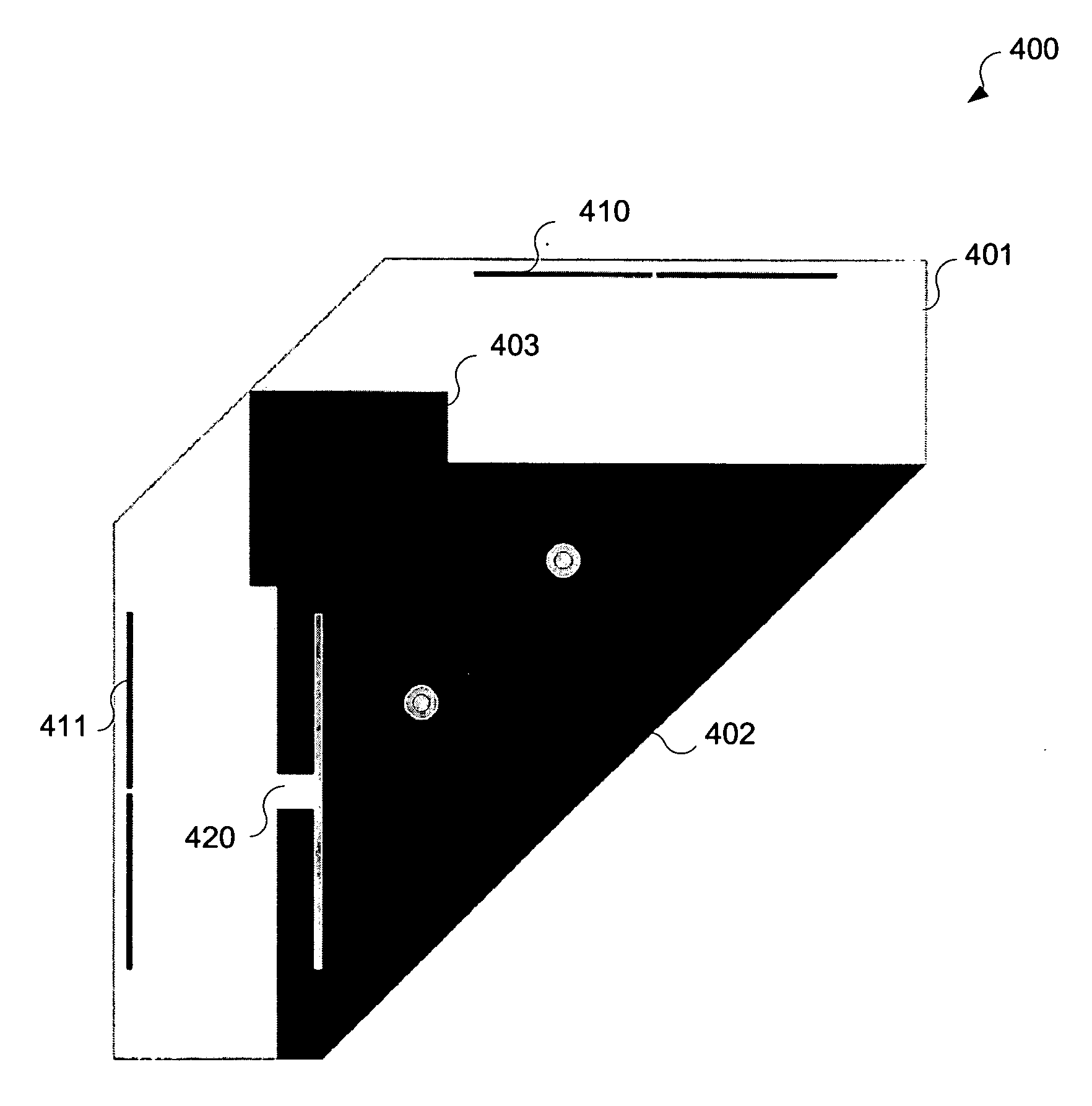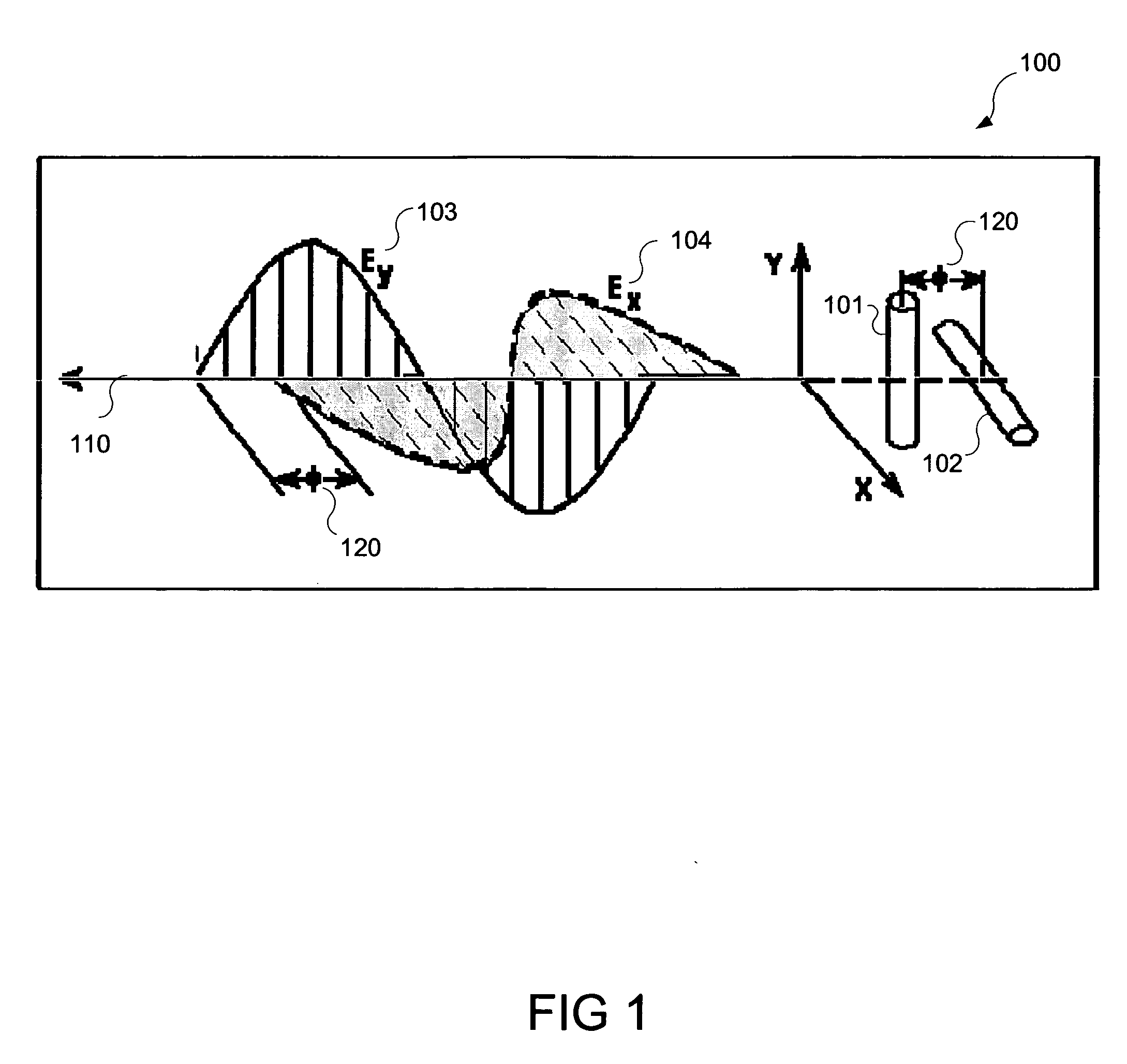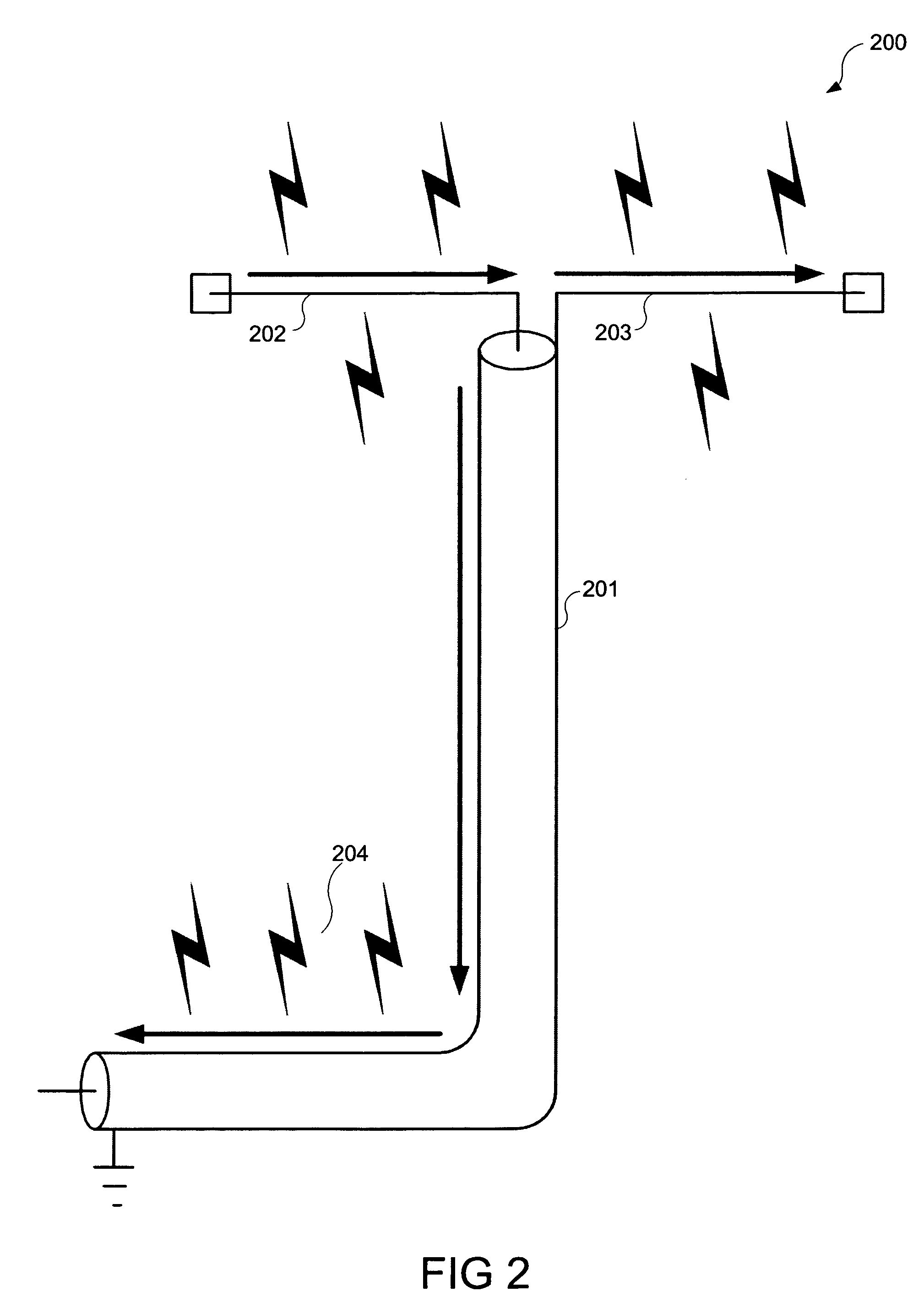Integrated, closely spaced, high isolation, printed dipoles
a dipole and integrated technology, applied in the field of wireless communication, can solve the problems of multi-path or random coupling of in-band signal energy, common mode coupling and common mode coupling of radiated energy, and additional problems, so as to reduce electromagnetic coupling, increase antenna isolation, and reduce common mode current
- Summary
- Abstract
- Description
- Claims
- Application Information
AI Technical Summary
Benefits of technology
Problems solved by technology
Method used
Image
Examples
Embodiment Construction
[0020] Referring now to the drawings in which like numerals reference like parts, several exemplary embodiments in accordance with the present invention will now be described. To address the above noted problems and other problems, an exemplary antenna configuration is provided where printed dipoles, or dipole elements, are positioned so as to be orthogonally polarized. The interference cause by a signal emanating from one radiating antenna into the adjacent antenna can be cancelled by establishing a polarity or orientation of the adjacent antenna having a natural tendency to cancel the signal energy which is produced with an electromagnetically opposite polarity or orientation from the radiating antenna.
[0021] It will be appreciated that the polarization of an antenna relates to the orientation of an electric field of a propagating signal radiated from the antenna and can be determined by the physical structure of the antenna and by its orientation. In contrast, the directionality...
PUM
 Login to View More
Login to View More Abstract
Description
Claims
Application Information
 Login to View More
Login to View More - R&D
- Intellectual Property
- Life Sciences
- Materials
- Tech Scout
- Unparalleled Data Quality
- Higher Quality Content
- 60% Fewer Hallucinations
Browse by: Latest US Patents, China's latest patents, Technical Efficacy Thesaurus, Application Domain, Technology Topic, Popular Technical Reports.
© 2025 PatSnap. All rights reserved.Legal|Privacy policy|Modern Slavery Act Transparency Statement|Sitemap|About US| Contact US: help@patsnap.com



